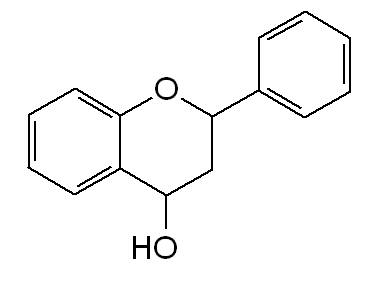Cannabis sativa L. is a rich source of terpenes and phenolic compounds which include flavonoids, stilbenoids, and lignans. The extraction of these bioactive molecules from cannabis by-products has evolved over time from simple solvent-based extraction to more complex methods such as ultrasound-assisted techniques. The method chosen for extraction of these compounds has several implications in terms of cost, convenience, and most importantly the yield and process efficiency. [1] A 2021 study published in Antioxidants analyzed different extraction techniques. [2]
- sativa has at least 26 flavonoids that have been identified; they include cannflavins, vitexin, apigenin, kaempferol, and quercetin. Conventional solvent extraction (CSE) is commonly used to recover and characterize phenolic compounds from cannabis inflorescences, seeds, and residues. Conventional solvents include ethanol, methanol, and acetone.
Mixing polar and non-polar solvents can increase efficiency in the extraction of terpenes and cannabinoids from cannabis flowers; an example is hexane:ethanol (7:3) being more efficacious than either solvent alone. [3] When polar extraction solvents were compared, aqueous acetone was the most efficient.
Hydrodistillation and steam distillation are methods that use steam to dissolve terpenes and separate them from the plant material. Steam distillation may favor monoterpenes whereas hydrodistillation may favor sesquiterpenes.
Supercritical carbon dioxide (CO2) has several advantages—it is inexpensive, chemically stable, non- flammable, and can be used to extract thermolabile compounds. It is also easy to evaporate once the extraction process is complete. The low temperature helps preserve sensitive compounds; this technique can generate higher essential oil yields compared to hydrodistillation. [4]
Intensification techniques may also be used, and they include ultrasounds, microwaves, and pressure. In ultrasound-assisted extraction (UAE), ultrasound waves are used to generate mechanical vibrations that destroy the cell walls of plant material to extract phenolic compounds. One study found that UAE doubled phenolic and flavonoid content compared to CSE. [5] Excessive sonication, however, may degrade these sensitive compounds.
The researchers determined that UAE and CSE were the dominant methods used in the extraction of phenolic compounds from Cannabis sativa L. As much as CSE has a longer extraction time and uses more solvent, it may be preferred due to its simplicity. CSE is also popular because it is a relatively low-cost method. The purpose is generally to identify and quantify compounds in laboratory settings.
On the other hand, intensification fractionation techniques such as UAE, microwave-assisted extraction (MAE), and supercritical CO2 are superior in other ways and may be more appropriate for commercial/industrial applications. These techniques offer better yields and improved kinetics compared to CSE. For example, when optimized, the UAE process takes about 20 minutes while CSE takes more than 3 hours.
The researchers concluded that further studies would be helpful to describe the operating conditions needed for fast, green methods. This includes defining parameters such as temperature, microwave or ultrasonic power with risk of phenolic degradation in mind, and the objective of phenolic extraction. [2]
Image Source
Flavon-4-ol, Nono64, Wikimedia Commons, CC BY-SA 3.0
References
1- Venkatesan T, et al. Impact of different extraction solvents on phenolic content and antioxidant potential of Pinus densiflora bark extract. BioMed Research International. 2019;2019. Journal Impact Factor: 3.411, Times Cited: 20 (Semantic Scholar)
2- Isidore E, Karim H, Ioannou I. Extraction of phenolic compounds and terpenes from Cannabis sativa By-Products: From conventional to intensified processes. Antioxidants. 2021;10(6):942. Journal Impact Factor: 4.520, Times Cited: n/a
3- Namdar D, et al. Variation in the compositions of cannabinoid and terpenoids in Cannabis sativa derived from inflorescence position along the stem and extraction methods. Ind Crops Prod. 2018;113:376–382. Journal Impact Factor: 5.645, Times Cited: 7 (Semantic Scholar)
4- Naz S, et al. Impact of supercritical fluid extraction and traditional distillation on the isolation of aromatic compounds from Cannabis indica and Cannabis sativa. J Essent Oil Bear Plants. 2017;20:175–184. Journal Impact Factor: 2.583, Times Cited: 19
5- Agarwal C, et al. Ultrasound-assisted extraction of cannabinoids from Cannabis sativa optimized by response surface methodology. J Food Sci. 2018;83:700–710. Journal Impact Factor: 3.167, Times Cited: 36 (Semantic Scholar)











